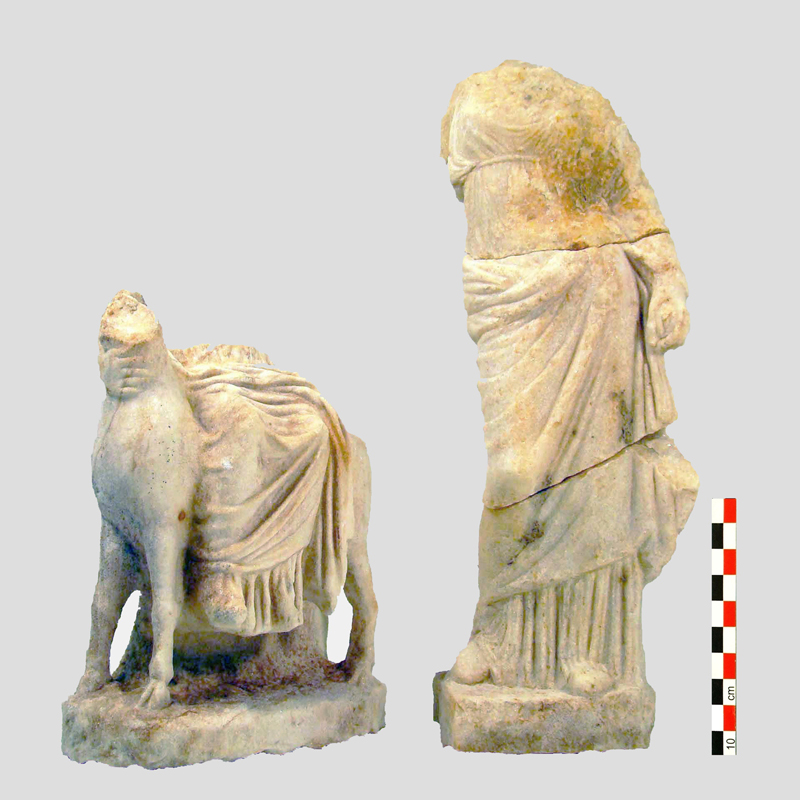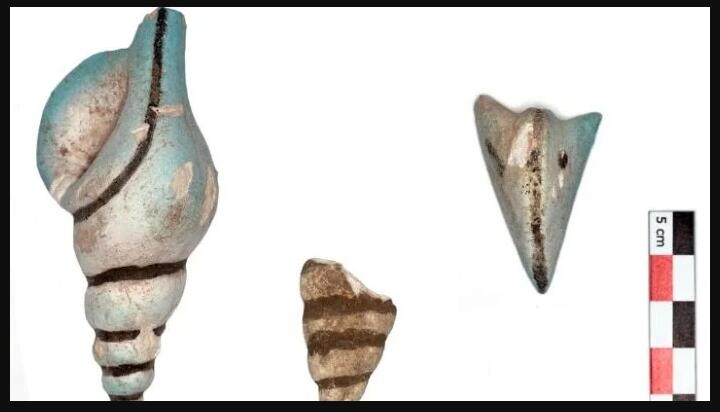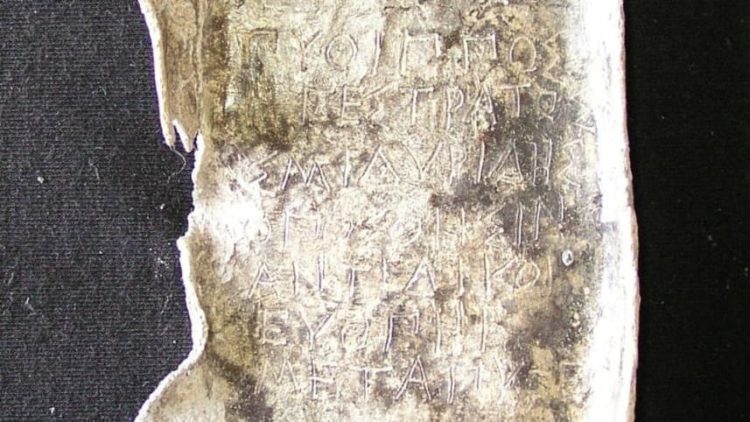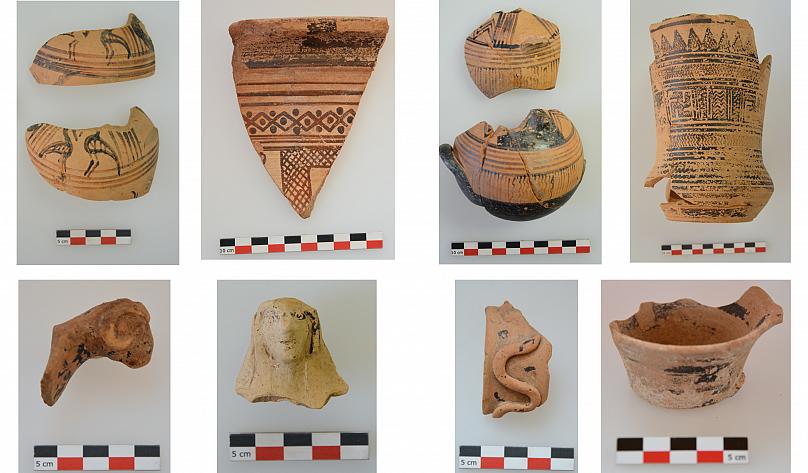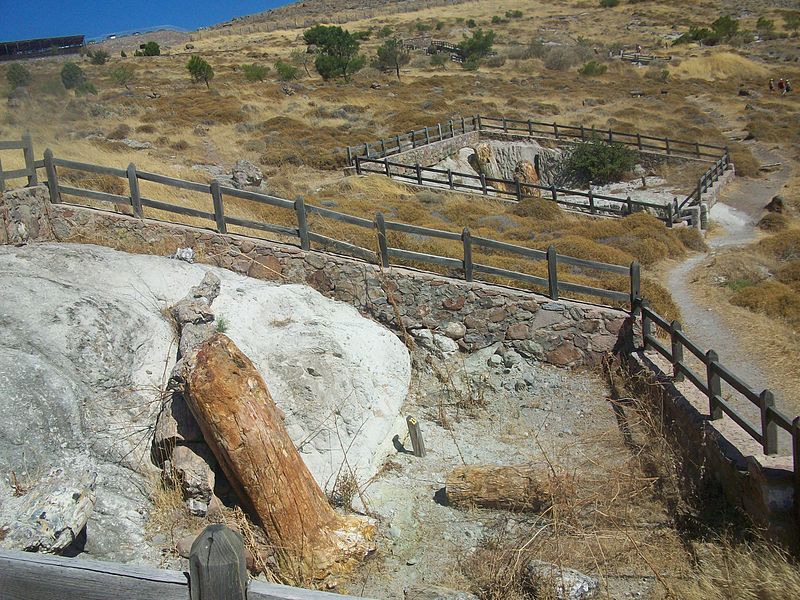DepthReading
Top Ten Most Spectacular Greek Archaeological Discoveries of 2020
Despite the many and varied challenges of the past year as the nation and the world struggled with the pandemic and all its ramifications, 2020 was another banner year forGreece in the realm of archaeology. Let’s discover top 10 of most spectacular Greek archaeological discoveries of 2020.
Home to some of the most spectacular finds on earth, the country offered up yet more treasures from its brilliant past in digs from the bottom of a well in Athens to artifacts found under the pumice at Akrotiri on the Greek island of Santorini.
While all the nation’s archaeological sites were forced to shut down during the two lockdown periods — and suffered tremendous losses of revenue due to global travel restrictions even when they were open — the ancient Greek city of Mycenae experienced yet another shock when a wildfire tore through the site.
However, the damage there was thankfully slight, and important archaeological work was still being carried out at many other sites around the country, with many new Greek archaeological discoveries coming to light.
Another significant milestone of 2020 was the new lighting scheme for the Athens Acropolis, with energy-saving LED lighting and new spotlights showing the Parthenon’s many features to great effect. A new lift and paved walkways also greatly improved access to the iconic site.
Another historical site of enormous importance to Greece is the shipwreck off the tiny Northern Sporades island of Peristera, offering such a hoard of underwater treasures that it is often called the “Parthenon of Shipwrecks” for its stellar importance to the understanding of Greece’s past. This underwater site was opened to scuba divers for the first time ever in the summer of 2020, with those who prefer to stay on land able to visit a nearby museum on the nearby island of Alonnisos, which exhibits artifacts and dioramas of the site.
1. Ancient Greek Head of Hermes, a stellar archaeological discovery under the pavement of Athens
The recent construction work on Aeolus Street in Athens has uncovered some astounding archaeological treasures from ancient Greece, on which the Ministry of Culture has now begun restoration (top photo).
The news of the recent discovery of the head of the Greek god Hermes, lying since antiquity at a depth of just 1.3 meters (4 feet 4 inches) under the feet of Athenians as they went about their daily business, was reported around the world.
This was perhaps the most spectacular find of all this year due to its location, with the priceless treasure lying just under the pavement of the busy Athens thoroughfare.
2. Archaeological Greek Discover at Athens in July: Ancient Aqueduct and Artifacts Unearthed
Greek archaeologists unearthed an ancient aqueduct and thousands of objects and artifacts dating from Hellenistic and Roman times during the excavations for the expansion of the Athens metro line to Piraeus.
Many of the objects were made of wood and were preserved in water at the bottom of a well. The household objects, including wooden furniture, are extremely unusual finds considering the carbon-based material of which they were made.
Some of the artifacts will frame the permanent exhibition that will be set up in the metro station called “Municipal Theater” in Piraeus, which is currently under construction.
Foremost among all the treasures found was an exquisite headless statue — which was found at the bottom of an ancient well (pictured above). Archaeologists posit that the destruction of the objects may have occurred during the Roman invasion of the area.
The exhibition will include other ancient artifacts, in addition to the Hermes, along with a model copy of the aqueduct, and an authentic pebble floor from the classical / Hellenistic era which was found during the excavations.
3. Archaeological treasures of the Minoan Civilization from Akrotiri, Santorini
Exquisite pottery was unearthed at Akrotiri, the ancient settlement on the Greek island of Santorini, early in 2020.
Most of the Greek archaeological discoveries at the site are related to the everyday life of the people who lived on the island before the volcanic explosion which destroyed most of the island — and subsequently, the Minoan civilization on Crete.
A perfectly-preserved shell-shaped vessel demonstrated the high level of artistic achievement in that civilization, in what was perhaps the most endearing find of all, showing that art was made for art’s sake even on the remote island in the days of antiquity.
Among dozens of other new findings, the Ministry of Culture noted that an inscription, consisting of Linear A syllables and an ideogram, was found written in ink on an object which is most likely related to the use of a building, also uncovered in the Akrotiri dig.
4. Curse Tablet Discovered in Athens Well
Showing another side of Greek history, a curse tablet, showing imprecations against an unfortunate man called Pytheas, was unearthed at the bottom of a well in Athens’ downtown neighborhood of Kerameikos (Ceramicus) by archaeologists from the German Archaeological Institute of Athens.
A total of thirty well-preserved curse tablets dating back to the Classical period (2,500 years ago) were found in an ancient well which was originally discovered back in 2016, when other everyday objects — but not the tablets — were found.
The ancient tablets have curses engraved on them which Athenian citizens would pay to have made against other people, a practice which was relatively common in ancient Greece.
5. Eight graves Unearthed in Ilia, near Olympia in September
Four of these rectangular grave sites in Ilia, all lined with rocks, and three extremely large funerary containers, called pithoi, were found at the site, as well as an individual coffin covered by ceramic tiles and a marble grave stele.
Inside one of the pithoi, which were so large that they were often used as coffins themselves, archaeologists discovered an ornately decorated bronze urn, together with its base
The urn features a floral design on its handles and lion heads fill the space between its handles and its rim. A bronze mirror with a relief was also found in the funerary container.
6. New Findings, Remains Discovered At Theopetra Cave
Theopetra Cave in Thessaly, Central Greece, was formed in the Upper Cretaceous period, 137,000,000 – 65,000,000 years before the present time. The cave that was created in the limestone there has been inhabited since the Middle Paleolithic period, and new findings give new insight into the lives of those early peoples.
According to archaeologists, the cave is likely to be the place of the oldest human construction on earth, as findings indicate that the shelter was inhabited as early as 130,000 years ago.
Neolithic residents of the cave ate wheat and cultivated barley, olives, lentils and wild pear, among others. They ate some meat, mostly from domesticated sheep and goats (which account for 60 percent of the bones found), and also kept cattle, pigs and at least one dog.
About 11 percent of the bones found at the cave belong to deer, wild boars, bears, hares, wildcats and badgers, all of which were hunted. Bones from a bear, for example, astoundingly still bear knife marks.
The community also made its own jewelry, drilling holes into deer-like teeth and shells from the nearby river. The remains of beeswax were also found in the community. The newest findings show that an estimated 43 people lived in Theopetra Cave during the Neolithic era.
7. Byzantine-era skull shows signs of complex surgery
A proto-Byzantine-era skull which was discovered by anthropologists in the Paliokastro area on Thasos island shows signs of complicated surgery, in one of the more shocking examples of what was discovered this year in all of Greek archaeology.
The skull, which dates from the early Byzantine period — the fourth to the seventh century AD — bears traces of surgery that are “incredibly complex,” according to researcher Anagnostis Agelarakis, Ph.D., who teaches at Adeplhi University.
The discovery was made by an Adelphi University research team led by Agelarakis. A total of ten skeletons, of four women and six men, were found and studied. They are likely to be persons of high social status.
“According to their skeletal-anatomical features, both men and women lived physically demanding lives…The very serious trauma cases sustained by both males and females had been treated surgically or orthopedically by a very experienced physician/surgeon with great training in trauma care. We believe it to have been a military physician,” the report says.
8. Building from Sixth century BC discovered at Epidaurus
Archaeological excavations conducted in July of 2020 revealed the remains of an even older temple building found at the shrine to Asclepius, the god of medicine, in the vicinity of the Tholos at the ancient site of Epidaurus, outside Athens.
The partially-excavated building, which is dated to about 600 BC, consists of a ground floor with a primitive colonnade and an underground basement chipped out of the rock beneath. The floor is an intact pebble mosaic, which is one of the best-preserved examples of this rare type of flooring to survive from this era.
The find is also considered significant because it predates the impressive Tholos building in the same location, whose own basement served as the chthonic residence of Asclepius, and which replaced the newly-discovered structure after the 4th century B.C.
This shows that the worship of Asclepius at Epidaurus began much earlier than previously thought and had the same chthonic features, while altering what is known about the history of the region in general.
9. Countless inscriptions and artifacts found on Vryokastraki
Archaeologists from the Department of Archaeology at the University of Thessaly discovered yet more important artifacts this summer on Vryokastraki, the small rocky islet near the Greek island of Kythnos, once home to a significant city in the early Byzantine period.
Well-preserved ceramics, jewelry, and female figurines were discovered in the sanctuary, leading experts to believe that there was an important cult to a female deity there.
The finds, only recently released in an announcement by the Greek Ministry of Culture, also include many epigraphical remains that detail the history of the island, which was continuously inhabited from the 12th century BC until the 7th century AD.
One of the inscriptions, which are considered “very important” by scholars, describes a pirate named Glafketis who took control of Kythnos in the 4th century BC.
According to the recently discovered artifact, Glafketis had support from the Macedonians, but was eventually forced out of power by the Athenians.
10. Oldest Greek Archaeological Discovery of 2020: Eighteen Million Year-old Petrified Trees on Lesvos
Finally, in a find that far predates human history but is nevertheless just as fascinating, fourteen petrified trees were found as a result of excavations for rainwater drainage pipes in an area near Sigri and in the region of Lesvos island’s Petrified Forest this year.
The area was declared as a Protected Natural Monument in 1985 but the additional trees that were found this year were extremely old, dating back to 18 million years ago.
The trees were killed by blasts of gas from the volcanic explosions and then covered by ash. Extensive heavy rains then flooded the area, sweeping away both the ash and sections of tree trunks. The giant mudflows blocked valleys, and the tree trunks piled up in successive layers, where they became fossilized.
Professor Nikos Zouros, director of the Petrified Forest of Sigri Museum said of the summer 2020 discovery, “The trunks were in a very good state of preservation – they are impressive logs laid on successive strata, one above the other.”
Category: English
DepthReading
Key words:


